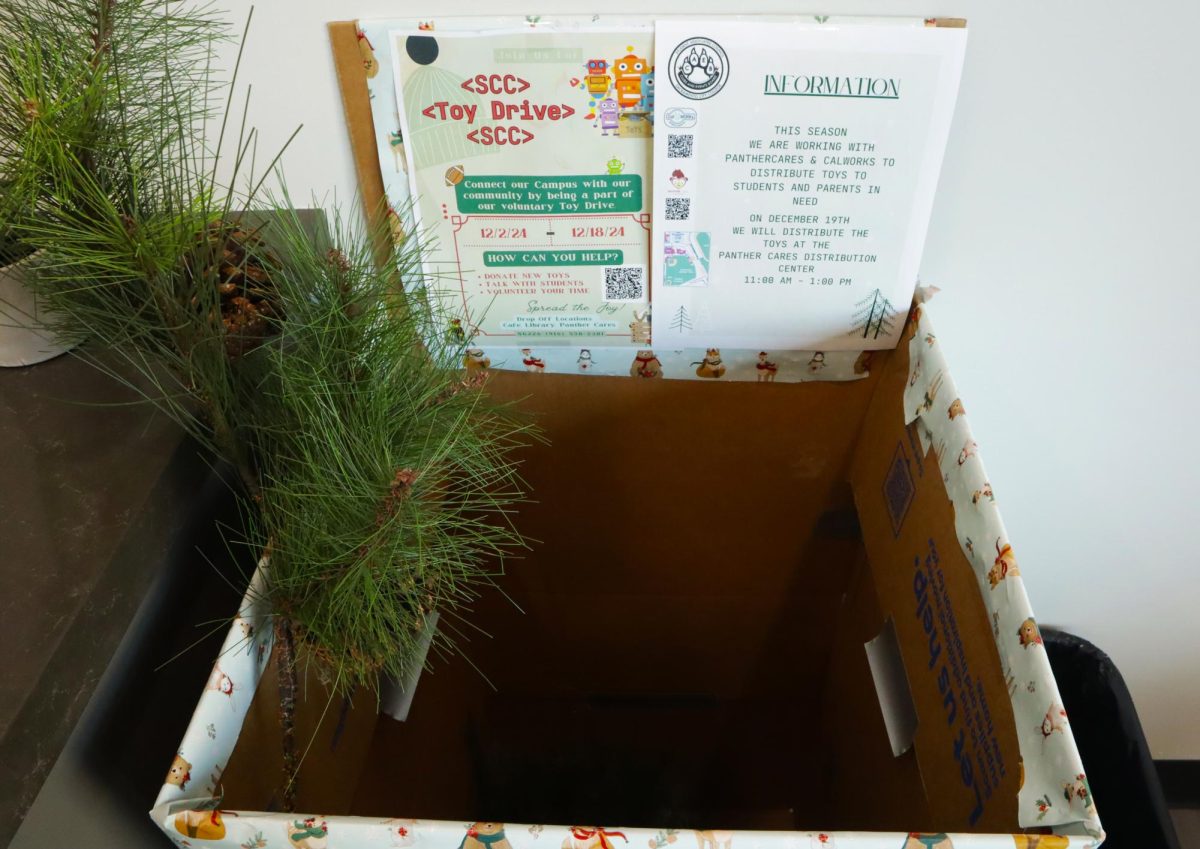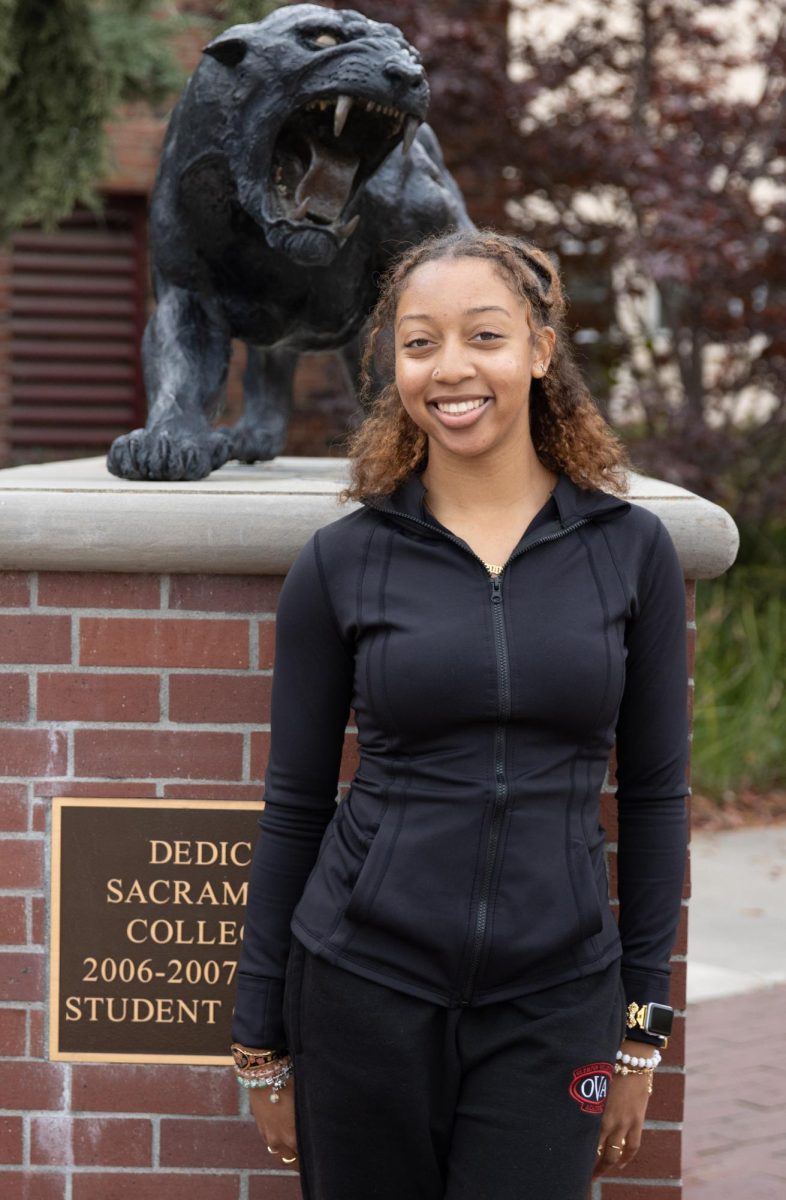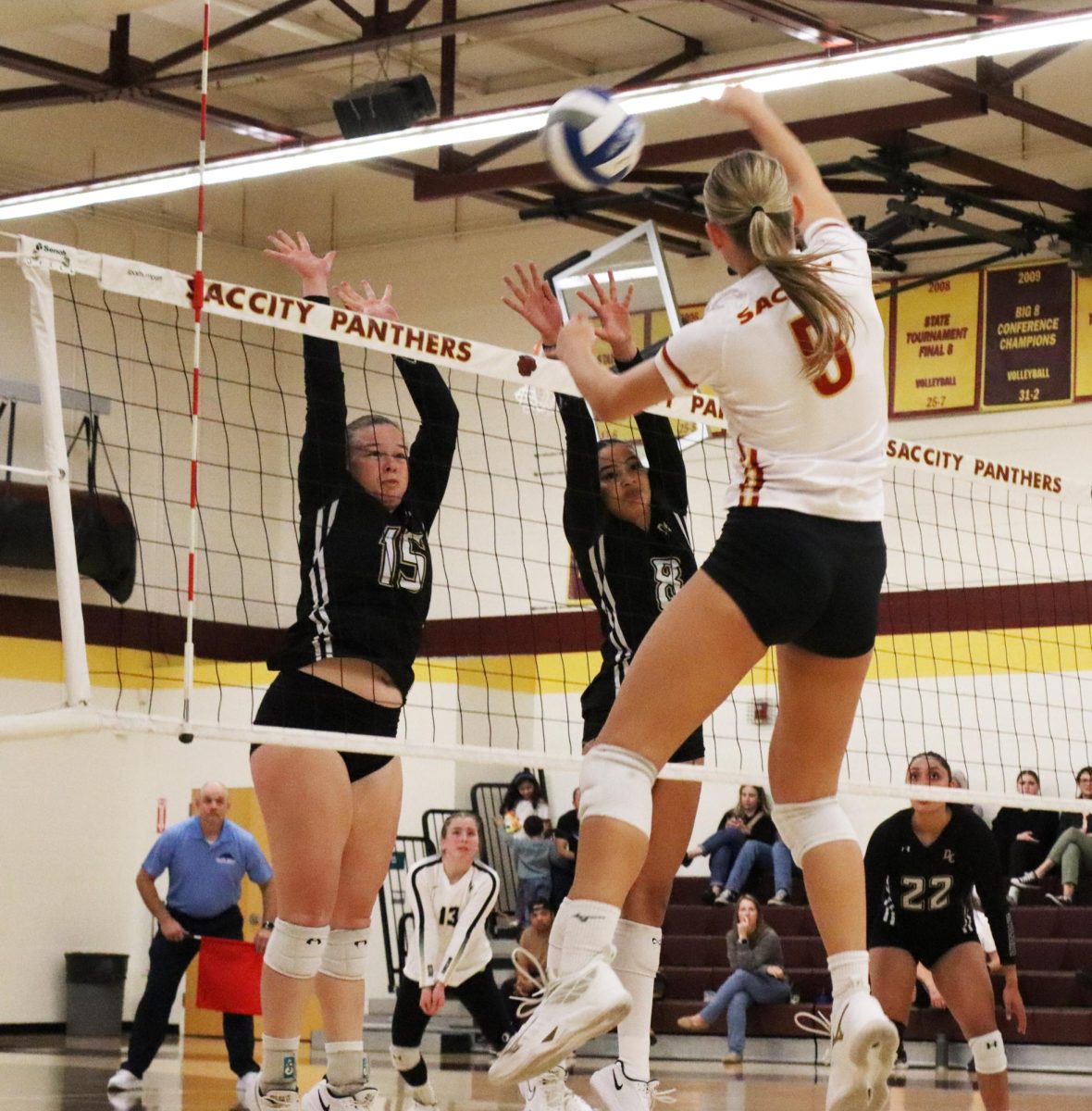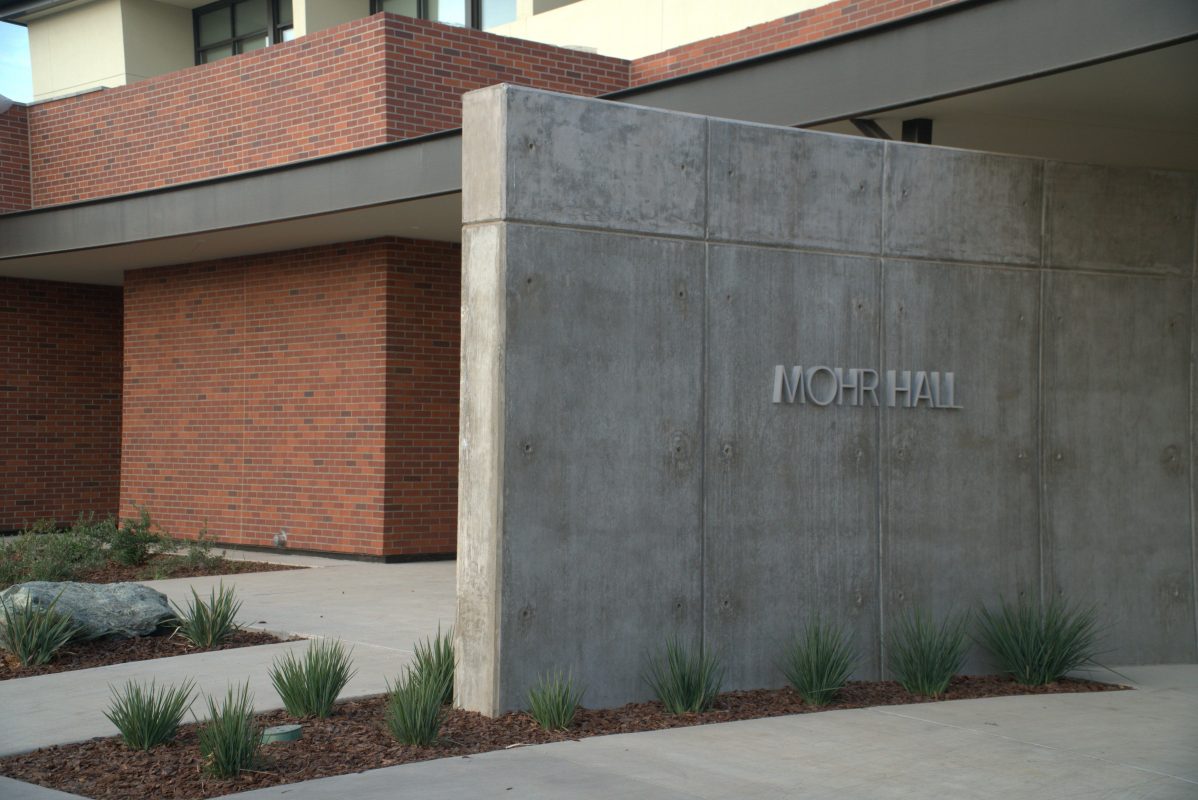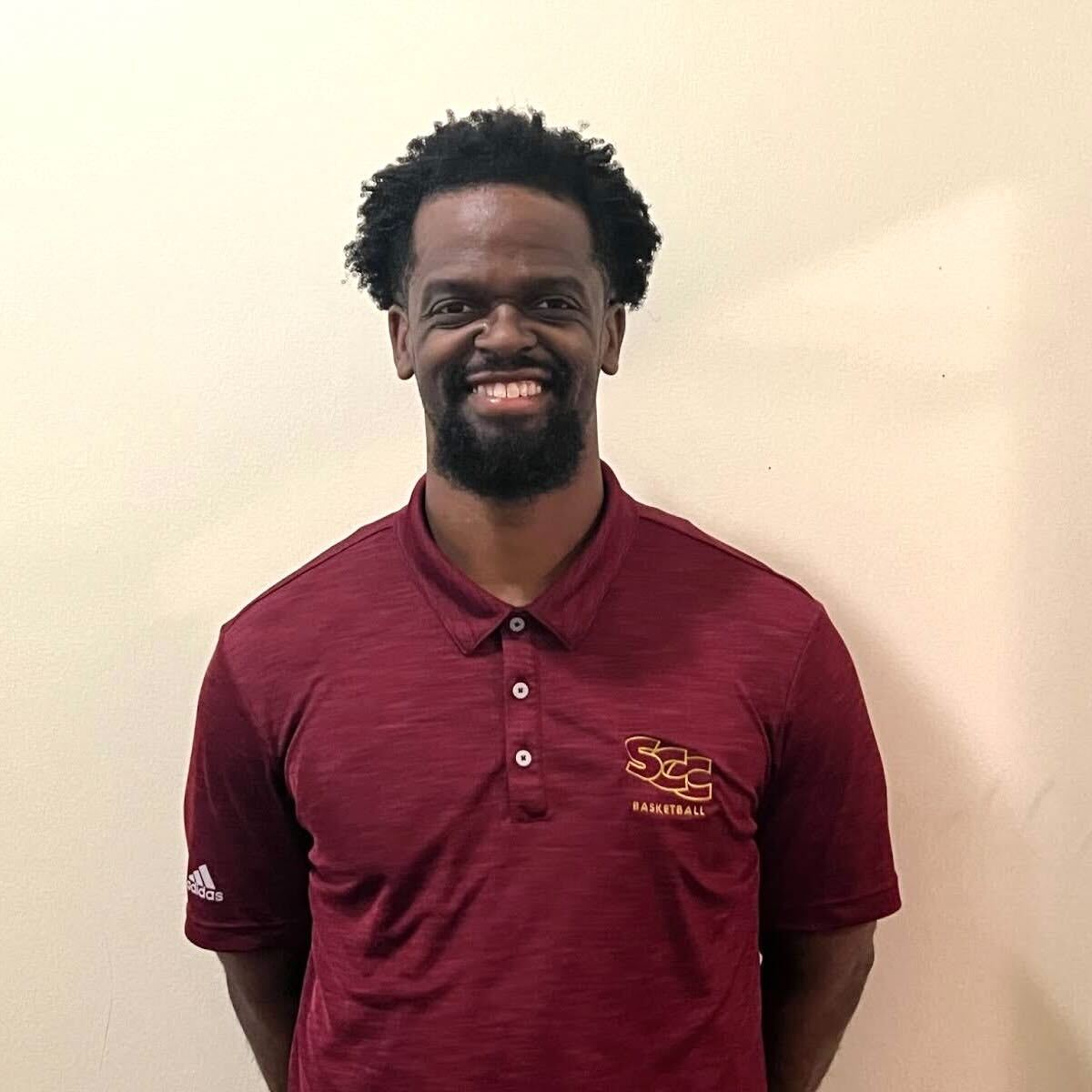Emerging shoots of grass grow in a bed of red bark along one of two entrances to the new building. Free of wear from weather and time, a sign is mounted on the concrete wall to the left of the walkway. The sign, silver set against the smooth grey vertical slab, reads “MOHR HALL” in a sharp-edged font. Poured and set within the last year, the concrete shows no remnants of dried chewing gum having been scraped from its crevices.
First-year nursing students were the first students to pass the decorative flower bed and enter Mohr Hall for instruction. For four weeks beginning Aug 15 leading into the fall semester, Helen Rice, assistant director and supervisor of the vocational nursing program, secured access to the new classrooms. With this opportunity, select instructors and students were able to interact with new equipment and be the first to occupy the classes and labs.
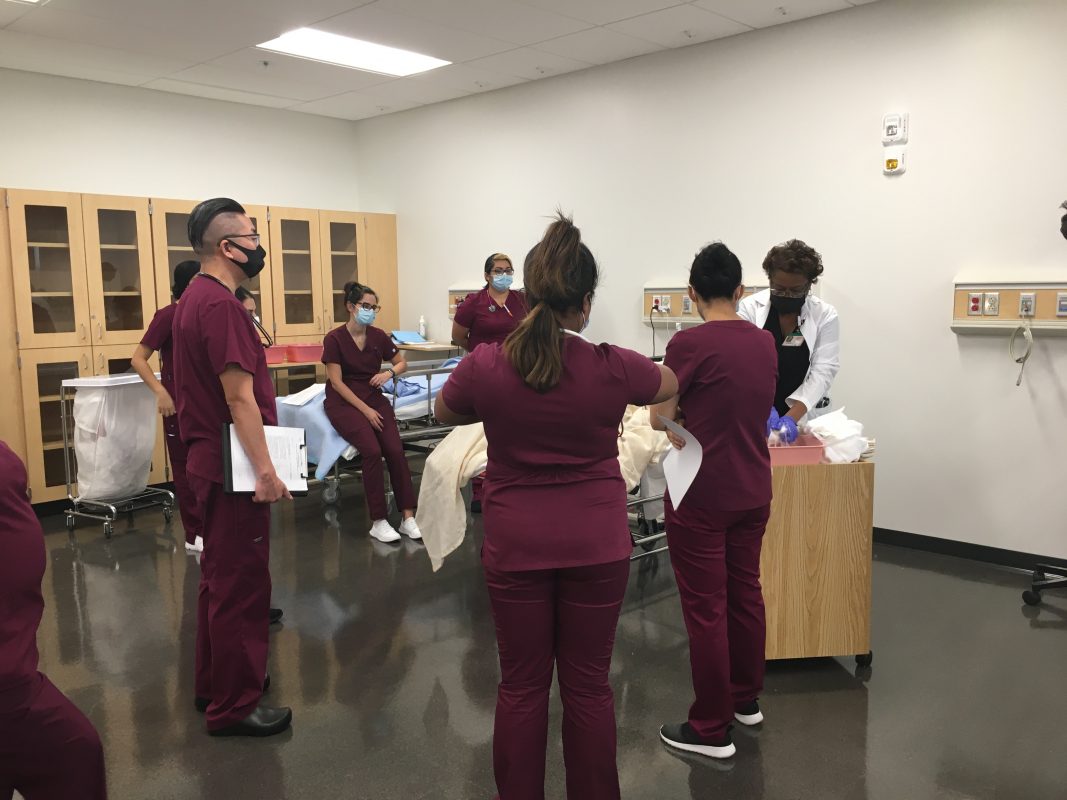
“We got special permission to use the labs and the classroom for these first four weeks,” said Rice. “The first semester [Registered Nursing] program also got to come in on Thursdays and Fridays and show their new students the lab and how to perform basic care.”
Rice has worked with the nursing program for five years and is also an adjunct nursing instructor. She said students were learning about communication with patients in the face-to-face class sessions. Rice credits Science and Allied Health Dean Jim Collins for granting approval to hold on-ground classes.
“Jim Collins [has] been instrumental in getting the Mohr Hall project not only conceived and approved, but up and running. We got [to add Sept. 14 & 15] because the first week, we got shut down early because of the air quality,” said Rice. “Because we got the extra two days, we brought in our third year vocational nursing students to see the place and practice.”
Cherisse Jackson is a nursing instructor who teaches licensed practical nursing. She also got to take part in instruction early in the semester within the reconstructed Mohr Hall. Jackson said Senior IT Tech Cha Thao helped get their temporary teaching spaces prepared for student occupation.
“My office is on the second floor in Mohr Hall,” Jackson said excitedly about her new work space. “Because we were working on hands-on skills with the students, we used the lab classes which have mannequins we use, as well as our medical assessment equipment. Our wonderful IT staff set up our computers and printers since we were there for the first four weeks of this semester. Cha Thao is our IT guy.”
As the student nurses’ allowed access to Mohr Hall ended Sept. 15, theory lessons will be completely remote, according to Rice. She added that securing a location for nurses to do in-person clinical work has been difficult. Staff and patients have tested positive for COVID-19 in facilities where nursing students would usually work, and the potential to transmit the virus has caused restricted access to patients at nursing homes.
“We’ve gotten tentative permission to start at Eskaton [Care Center Greenhaven]. Right now, the nursing homes have restrictions,” said Rice. “If they don’t have it in any patients, they won’t let us come because they’re afraid that we’ll bring it in. They won’t even let family visitors there. Because of COVID.
“In lieu of that, we’re doing simulations,” Rice continued. “We have programs that use avatars that simulate patients. We have three different assignments to give our students to practice as if it was a real patient.”
Rice said nursing department faculty and staff worked half the summer restructuring curriculum in preparation for fall semester. The time they had to regroup was far less when campus closures were announced in March. The nursing department had three days to transition to remote instruction at the time, according to Rice.
“Normally, we [require] 324 hours of direct patient contact. The board of registered nursing and the board of vocational nursing allowed us to do 51% face-to-face and 49% remote,” Rice explained. “Luckily we had already accomplished our 51% [by the time the move to remote instruction was necessary].”
According to Rice, having students receive socially distant face-to-face instruction at the beginning of the semester in Mohr Hall was a valuable opportunity. She said that, before campus closures, the nursing department didn’t use simulation software like they do now. Rice said there was a lot of struggle from March to May to ensure all of the lecture material and simulation needed was acquired and implemented.
“We didn’t have the video simulation. We didn’t have any agreements with companies because we hadn’t had to use that,” Rice said of the sudden campus closure. “It took a few weeks to get those simulations arranged. We were super happy to have our students at Mohr Hall. Because we—first of all, these are students that we wouldn’t know—want to meet our students and get them to at least do simulations on mannequins.”
During the first quarterly teleconference with student journalists in Sept., California Community College Chancellor Eloy Ortiz Oakley acknowledged the difficulties for some programs like nursing in implementing high-level instruction to students.
“It has been difficult particularly for some programs to design their courses in a way to allow students to get the education they need to meet certain certification requirements,” Oakley said. “[It] has been very difficult to allow nurses to get the clinical rotations that they need in hospitals.”
Oakley said that nursing programs are especially impacted by physical distance and limited access to direct experience. When budget cuts and hiring freezes were imposed at the end of the spring semester, City College’s vocational nursing program was fully staffed according to Rice, so it was not impacted by that change.
“The [Registered Nursing] program wasn’t so lucky. They were already down at least two positions and those can’t be filled. We do get to continue to use adjunct faculty, like myself,” said Rice. “Going forward, we don’t know what will happen with our nursing program. We’re luckier than some departments. The program didn’t get cut, but if we lose a teacher right now, we can’t rehire.”
Jackson said that all of the department’s Vocational Nursing classes were offered this semester. She said distance learning has added a lot of collaboration and hard work, adding that she and her fellow instructors are constantly reassessing how to best meet students’ needs.
“At this point, none of the VN classes have been canceled,” Jackson said. “Myself and three other instructors work as full time vocational nurse faculty. We all work together to be ready, even through summer.”
Rice said that the cuts to the budget indirectly affected prerequisites built into the nursing program. Before the shut down on campus, library services offered training for the Test of Essential Academic Skills, which is administered to incoming nursing students.
“To get into our program, students have to take a TEAS test,” said Rice. “It covers math and english and stuff. The training program for that got canceled completely in the budget cut. A lot of preparatory classes are being canceled. There are sections of math and English as a second language that have been canceled. Those are classes our students need to be proficient in to get into our program. It’s definitely going to keep them at community college longer. If there are [fewer] sections to get in to, they’ll have to wait a semester or two to get that [degree prerequisite] class”
Three years ago, when the original Mohr Hall initially closed for demolition, the vocational nursing program was forced to reduce its class sizes from 60 students to 40. The limited space offered by the temporary buildings the nursing department occupied did not allow for larger class sizes. Rice said restrictions brought on by the pandemic that apply to nursing programs at other schools didn’t impact the vocational nursing class sizes.
“We did not decrease the [class size] because we had already had to decrease them by one third when we left Mohr Hall,” Rice said. “We’re still down a complete cohort, which is 20 students. The RN program did not have to decrease when we originally moved three years ago, but now they did have to decrease by 10 to 15 students.”
The RN program would typically enroll another 20 students in January, but Rice said they don’t have approval to do it.
“We might lose another 20 students in our vocational program, but we just don’t know yet. In the future, that’s going to be a huge impact because between the two programs,” Rice said. “We have over 30 staff that didn’t get trained, so we’re going to see [fewer nurses] coming out of our programs. It’s [fewer] students who get to work.”





